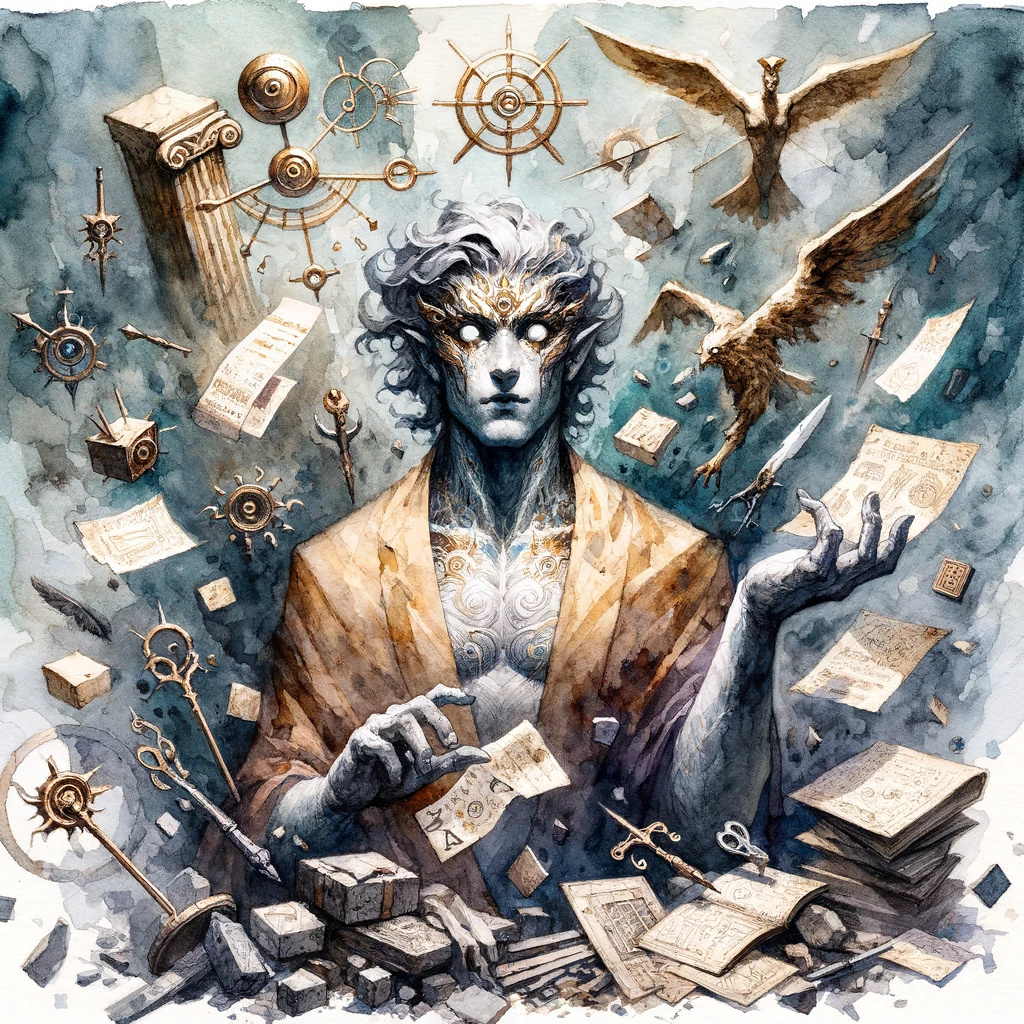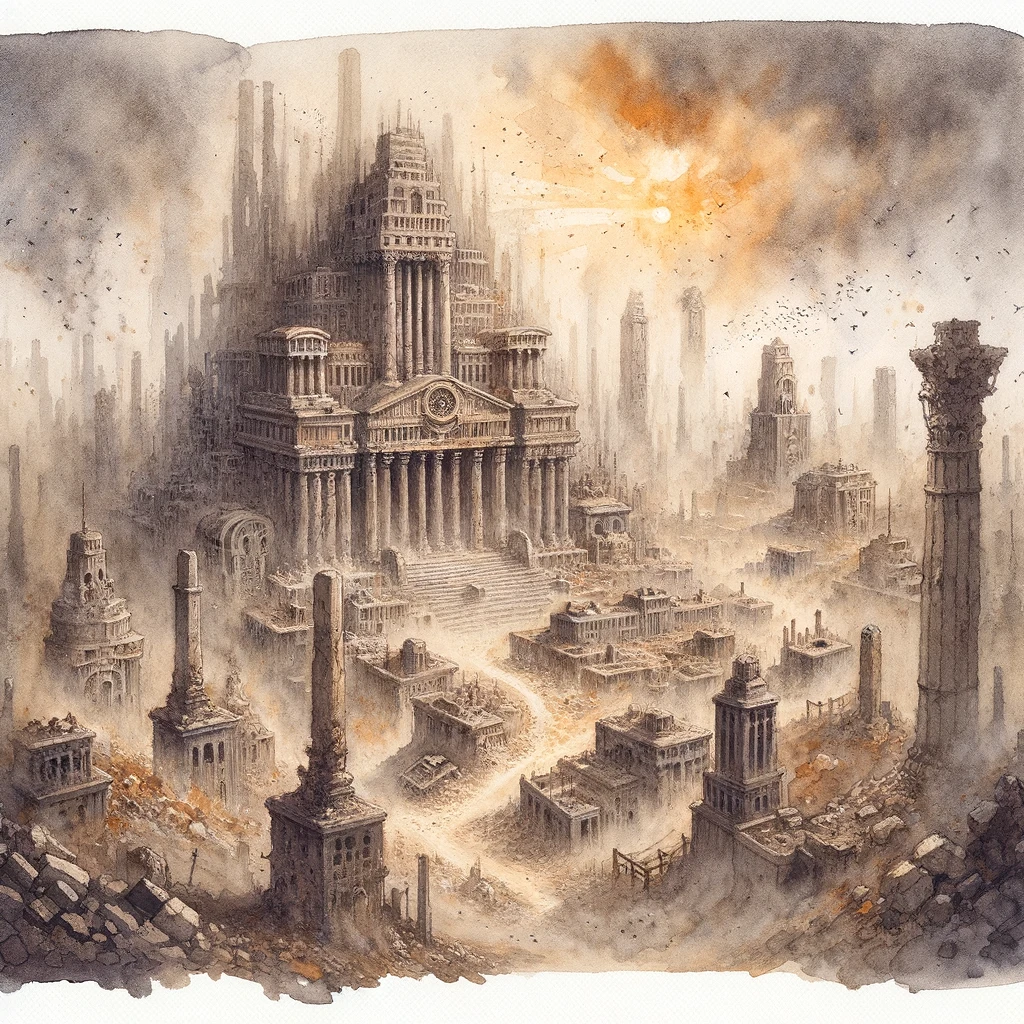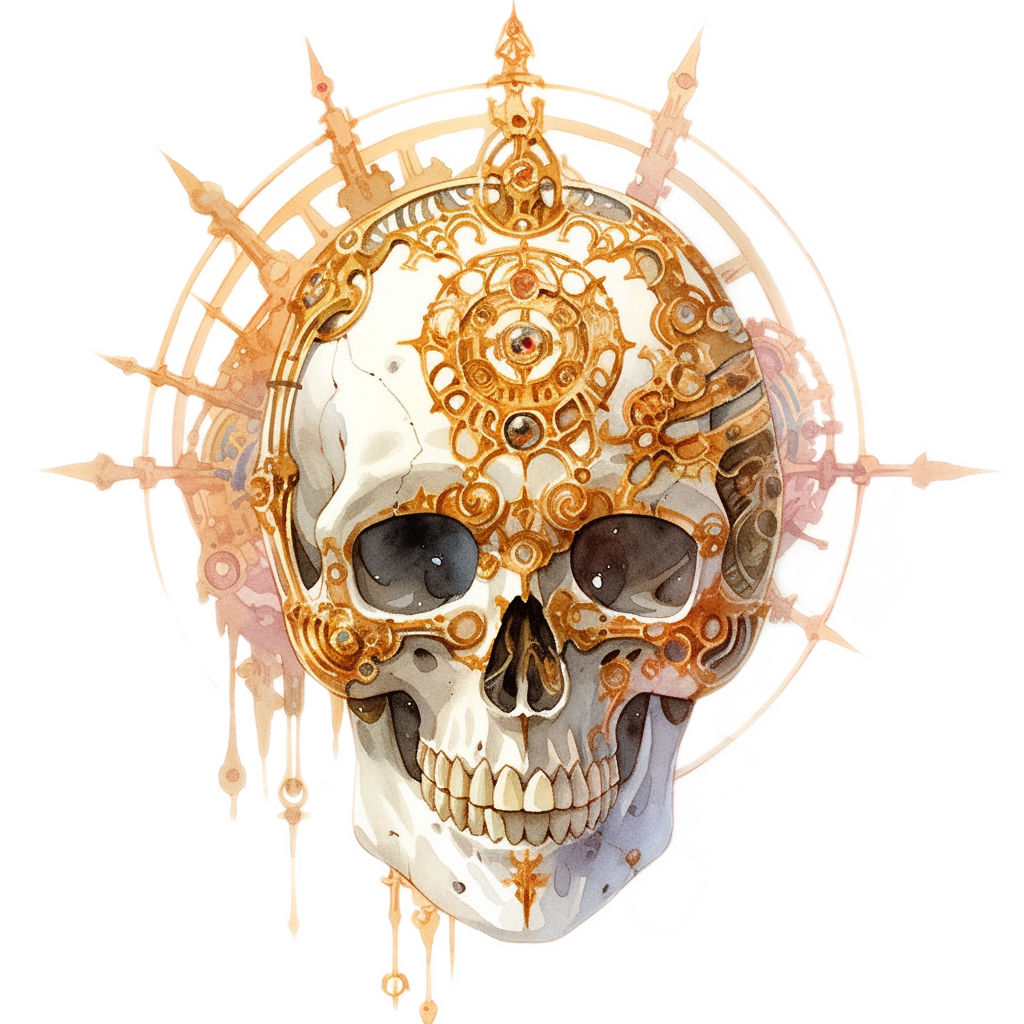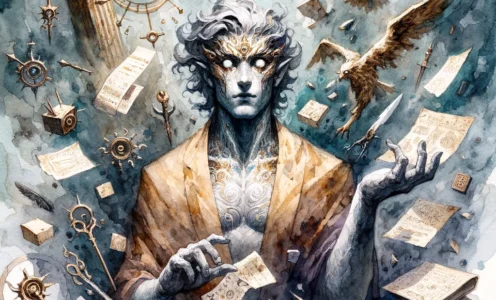Alu-Akkad, God of Broken Systems

The Monkey in the Works
(Demipower of the disintegration of social institutions [He/Him] / CN)
Realm: Quasi-Elemental Dust / Oasis of Filth / Everything Crumbles
Pantheon: Dust
Symbol: A torn hat
You know what inertia is, don’t you? Inertia is when things continue the way they always have. The squirrels eat the fish, the fish eat the lettuce, and the lettuce eats the squirrels. Why should things change?
Alu-Akkad is one reason.
The Monkey in the Works delights in watching complex patterns of behaviour among entities in the Inner and Prime planes break down, degenerate, or become lost and forgotten. His proxies, often modified alu-fiends he has twisted into agents of chaos, encourage ignorance and destruction. Paradyn is a nominal ally, but the two aren’t close.
Alu-Akkad thrives on the disintegration of order and structure. His philosophy is rooted in the inevitability of collapse: no system, no matter how grand or intricate, can withstand the relentless pull of decay. To Alu-Akkad, this isn’t a tragedy but a natural process, a cosmic truth that reveals the futility of permanence. He doesn’t destroy directly; instead, he introduces subtle disruptions—small fractures in the machinery of institutions—that grow unseen and multiply unchecked until the whole edifice inevitably crumbles under its own weight. For Alu-Akkad, every broken system is a work of art, each collapse a symphony of entropy. His realm in the plane of Dust, Everything Crumbles, is this philosophy embodied as a city on the edge of collapse.
The demipower’s origins are shrouded in mystery, like much about him, but whispers suggest he was once a minor spirit of innovation within some long-crumbled pantheon. In his early days, he was a force for change—the first spark that inspired growth and adaptation. Yet somewhere along the way, his purpose got twisted. Perhaps it was witnessing how every innovation eventually ossified into dogma or how every revolution gave birth to new tyrannies. Whatever the cause, Alu-Akkad became disillusioned with creation itself. He turned his attention not to building but to dismantling, finding more beauty in the flaws and cracks that others sought to repair. His torn hat symbol—a relic of authority undone—reflects this transformation: a crown reduced to tatters, an emblem of power stripped of meaning.
Alu-Akkad’s followers are an eclectic mix: Anarchists who see him as a patron saint of rebellion, nihilists who embrace his philosophy of inevitable decay, and even scholars fascinated by his role as a cosmic critic of order. Yet his patronage comes at a cost. Those who invoke him often find their own plans unraveling in ways they didn’t anticipate. This is Alu-Akkad’s ultimate lesson: no one is immune to entropy—not kings, not powers, not even those who claim to serve him. In his eyes, all systems are broken systems just waiting to reveal their fractures. To worship Alu-Akkad is to embrace impermanence and to find liberation in the chaos that follows when everything crumbles.
Source: Lane Ripley and Jon Winter-Holt



Great! Deserves more detail.
Your wish is my command — enjoy! I gave his realm a separate entry as well…